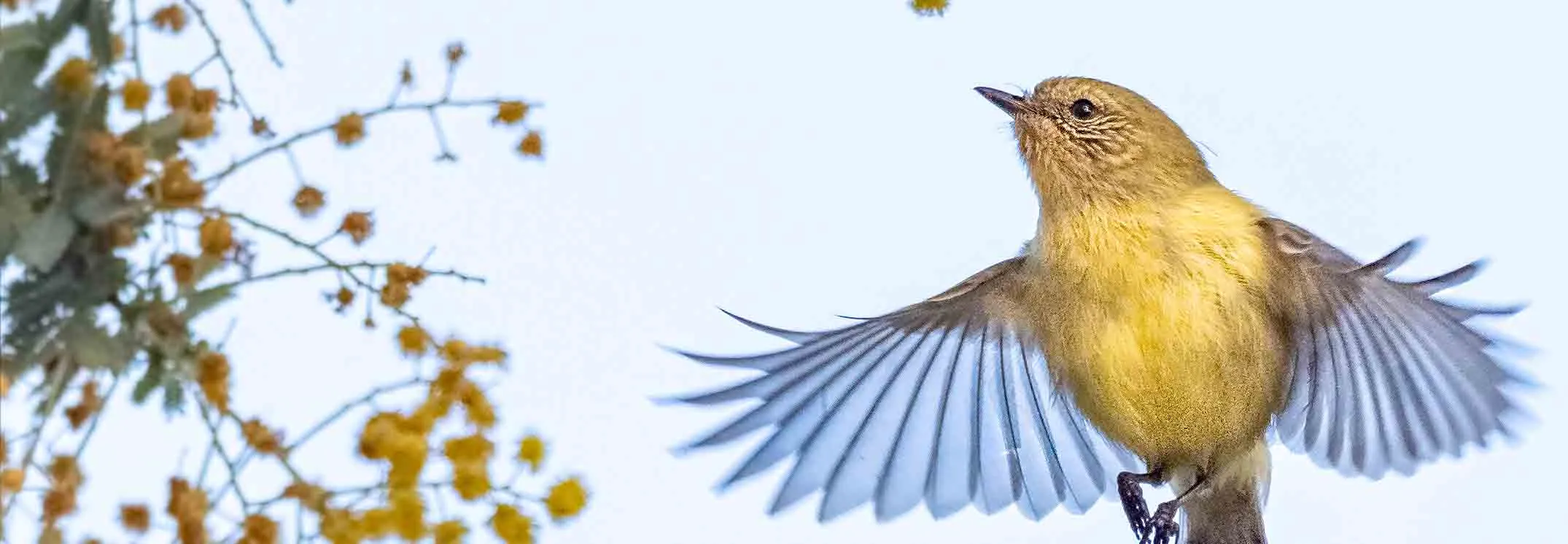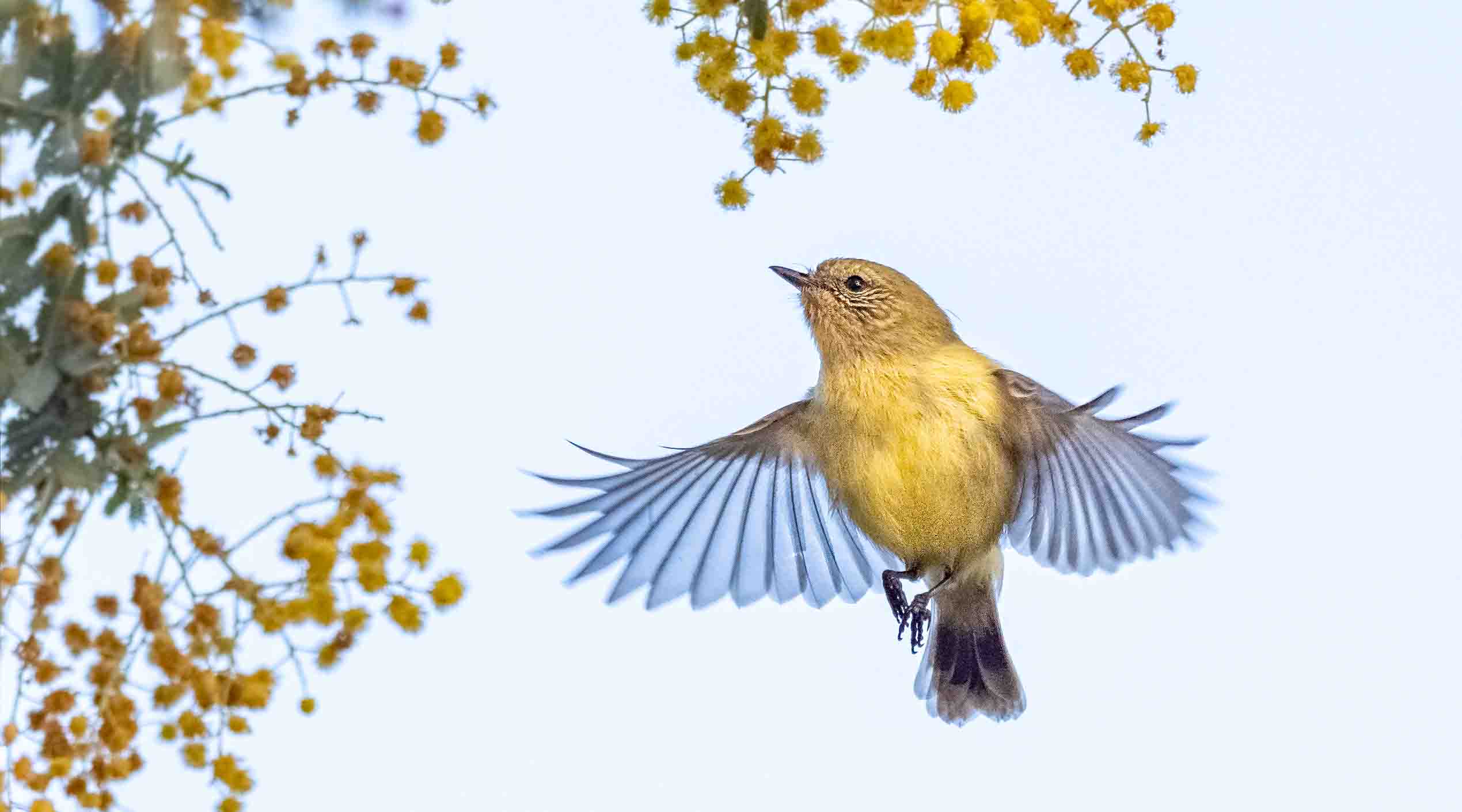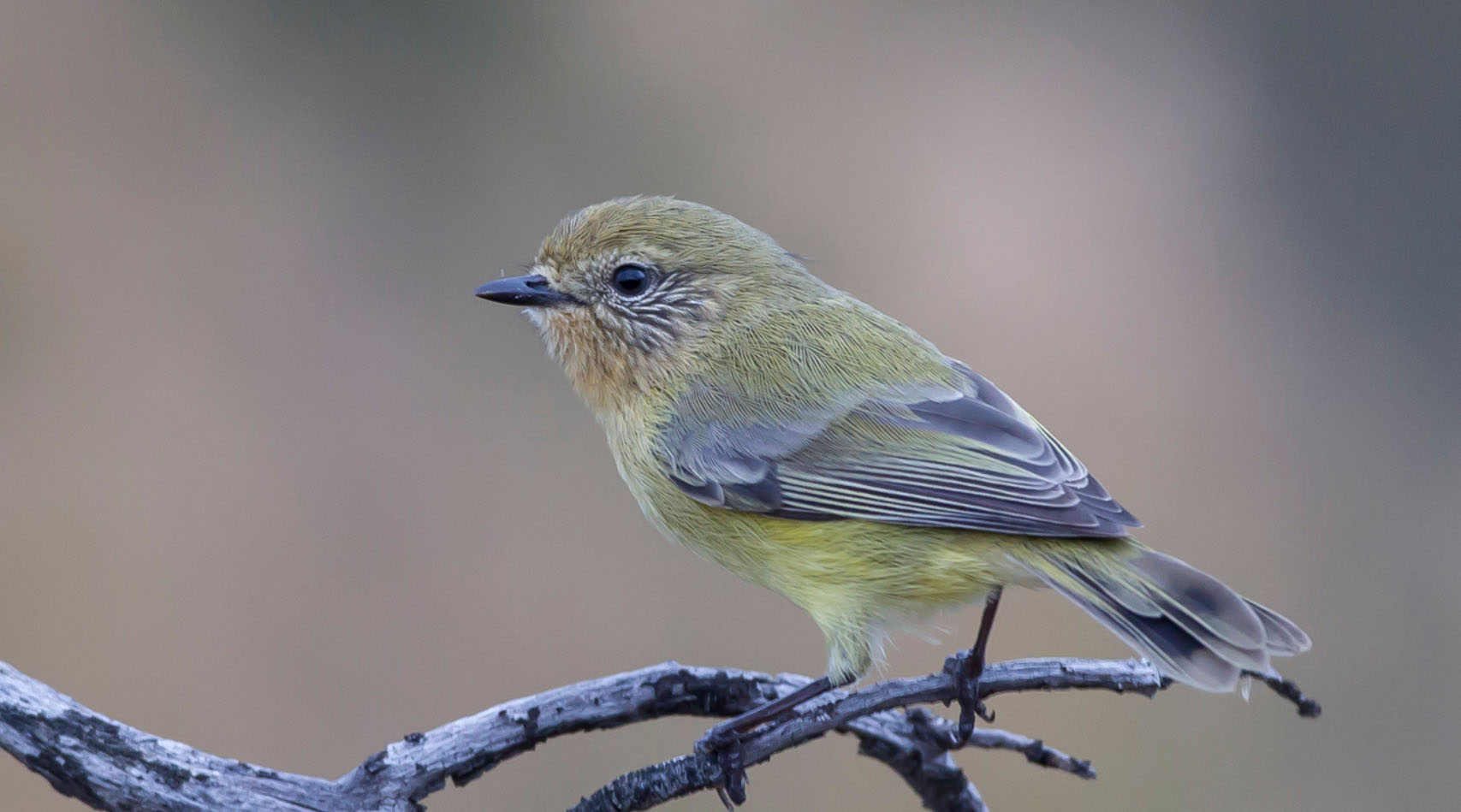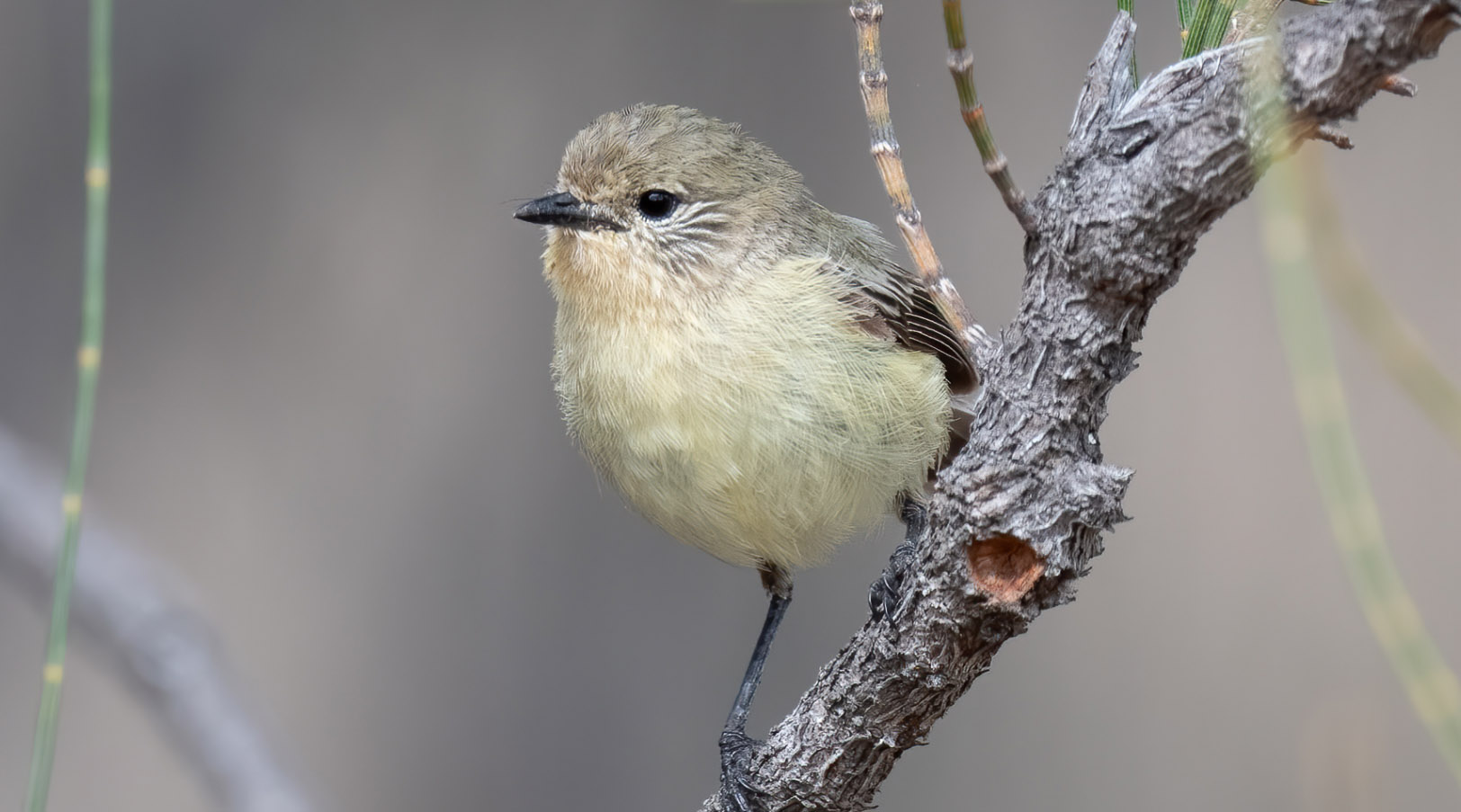Bird Overview
All thornbills are small birds, and the Yellow Thornbill is one of the smallest — it was once known as the ‘Little Thornbill’. They occur throughout open forests, woodlands and shrublands in eastern and south-eastern Australia, usually where the dominant plants are not eucalypts. They almost always occur in trees, gleaning small insects and other invertebrates among the leaves, twigs and small branches.
Identification
The Yellow Thornbill is a small to medium-sized thornbill and is the most yellow of the thornbill group. It is greenish-olive on the back, with white streaking on the cheeks and ears, and has pale to bright yellow underparts. There is a reddish brown tone on the chin and throat. The young birds are similar but duller.
Songs and Calls
Harsh, scratchy two-note calls: ‘tzid-id’ or ‘tzid-id, tis-tis’.
Location
The Yellow Thornbill is found along the eastern states of Australia from the bottom half of Queensland, through most of NSW and all of Victoria. Its distribution also extends into South Australia.
Habitat: Woodland, Forest, Urban
Habitat
The Yellow Thornbill is found in open forests, woodlands and shrublands which are dominated by Casuarinas, Acacias or paperbarks rather than eucalypts. Often seen in parks and gardens, preferring more established areas.
Behaviour
They build their domed nests in the leafy twigs or foliage of trees or shrubs, where they are often parasitised by bronze-cuckoos.
Feeding
The Yellow Thornbill feeds mainly on insects, but may sometimes eat seeds. They feed almost exclusively in the foliage of trees, most often Acacias, paperbarks, casuarinas and native pines.
Breeding
Breeding pairs of Yellow Thornbills may sometimes have helpers to assist them with feeding the young. Females build a rounded domed nest, with a narrow, hooded entrance near the top, out of grasses, bark and other materials, lining it with feathers, fur or soft plant down. The nest is usually in twigs of upper tree branches. The female incubates the eggs alone, but both parents (and possibly helpers) feed the young.



